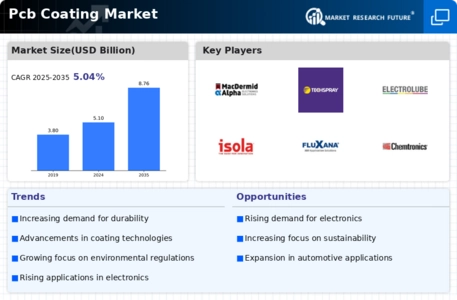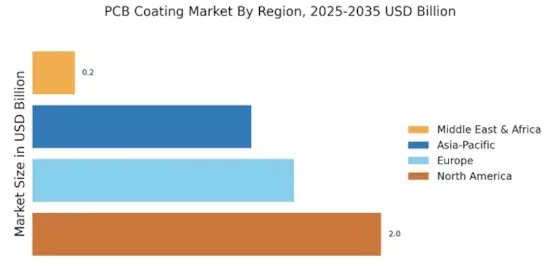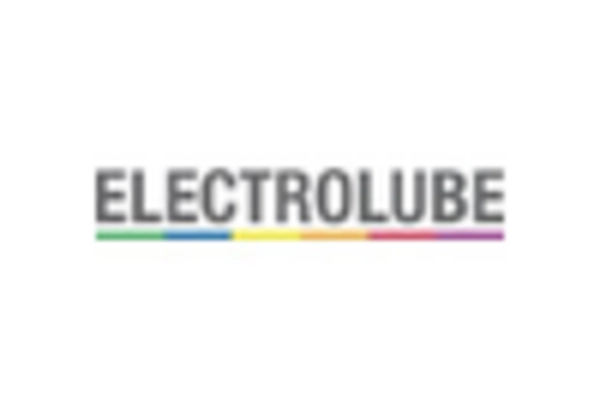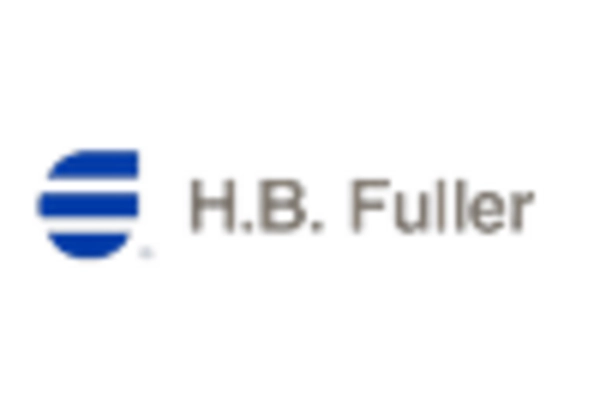Rising Focus on Miniaturization
The trend towards miniaturization in electronics is a key driver for the Pcb Coating Market. As devices become smaller and more compact, the need for effective PCB coatings that can provide protection without adding bulk is paramount. This trend is particularly evident in sectors such as consumer electronics and medical devices, where space constraints are critical. The demand for ultra-thin and lightweight coatings is expected to rise, as manufacturers aim to enhance the functionality of their products while maintaining performance. In 2025, the miniaturization trend is likely to continue influencing the Pcb Coating Market, as companies innovate to meet the evolving needs of consumers.
Growth of Automotive Electronics
The automotive sector is increasingly integrating advanced electronic systems, which is positively impacting the Pcb Coating Market. With the rise of electric vehicles (EVs) and autonomous driving technologies, the demand for reliable and high-performance PCBs is escalating. In 2025, the automotive electronics market is anticipated to exceed 300 billion USD, creating substantial opportunities for PCB coating manufacturers. These coatings are essential for protecting PCBs from the harsh conditions encountered in automotive applications, such as temperature fluctuations and exposure to chemicals. As automotive manufacturers prioritize safety and performance, the demand for specialized PCB coatings is likely to grow, further driving the Pcb Coating Market.
Increasing Demand for Electronics
The Pcb Coating Market is experiencing a surge in demand driven by the rapid growth of the electronics sector. As consumer electronics become more sophisticated, the need for reliable and durable printed circuit boards (PCBs) intensifies. In 2025, the electronics market is projected to reach a valuation of over 1 trillion USD, which directly correlates with the rising demand for effective PCB coatings. These coatings protect against moisture, dust, and other environmental factors, ensuring the longevity and performance of electronic devices. Furthermore, the proliferation of smart devices and IoT applications necessitates advanced coating solutions that can withstand harsh conditions, thereby propelling the Pcb Coating Market forward.
Regulatory Compliance and Standards
The Pcb Coating Market is significantly influenced by stringent regulatory requirements and industry standards aimed at ensuring product safety and environmental protection. Various regions have implemented regulations that mandate the use of specific coating materials to minimize hazardous substances in electronic products. For instance, the RoHS directive restricts the use of certain hazardous materials in electrical and electronic equipment. Compliance with these regulations not only enhances product safety but also drives innovation in coating technologies. As manufacturers strive to meet these standards, the demand for advanced PCB coatings that comply with regulatory frameworks is expected to rise, thereby fostering growth in the Pcb Coating Market.
Technological Innovations in Coating Processes
Technological advancements in coating processes are reshaping the Pcb Coating Market. Innovations such as nano-coating and conformal coating techniques are enhancing the performance and efficiency of PCB coatings. These advanced processes not only improve the protective qualities of coatings but also reduce production costs and time. In 2025, the market for advanced coating technologies is projected to grow significantly, as manufacturers seek to adopt more efficient and effective solutions. The introduction of automated coating systems and improved application methods is likely to streamline production processes, thereby increasing the competitiveness of companies within the Pcb Coating Market.



















Leave a Comment